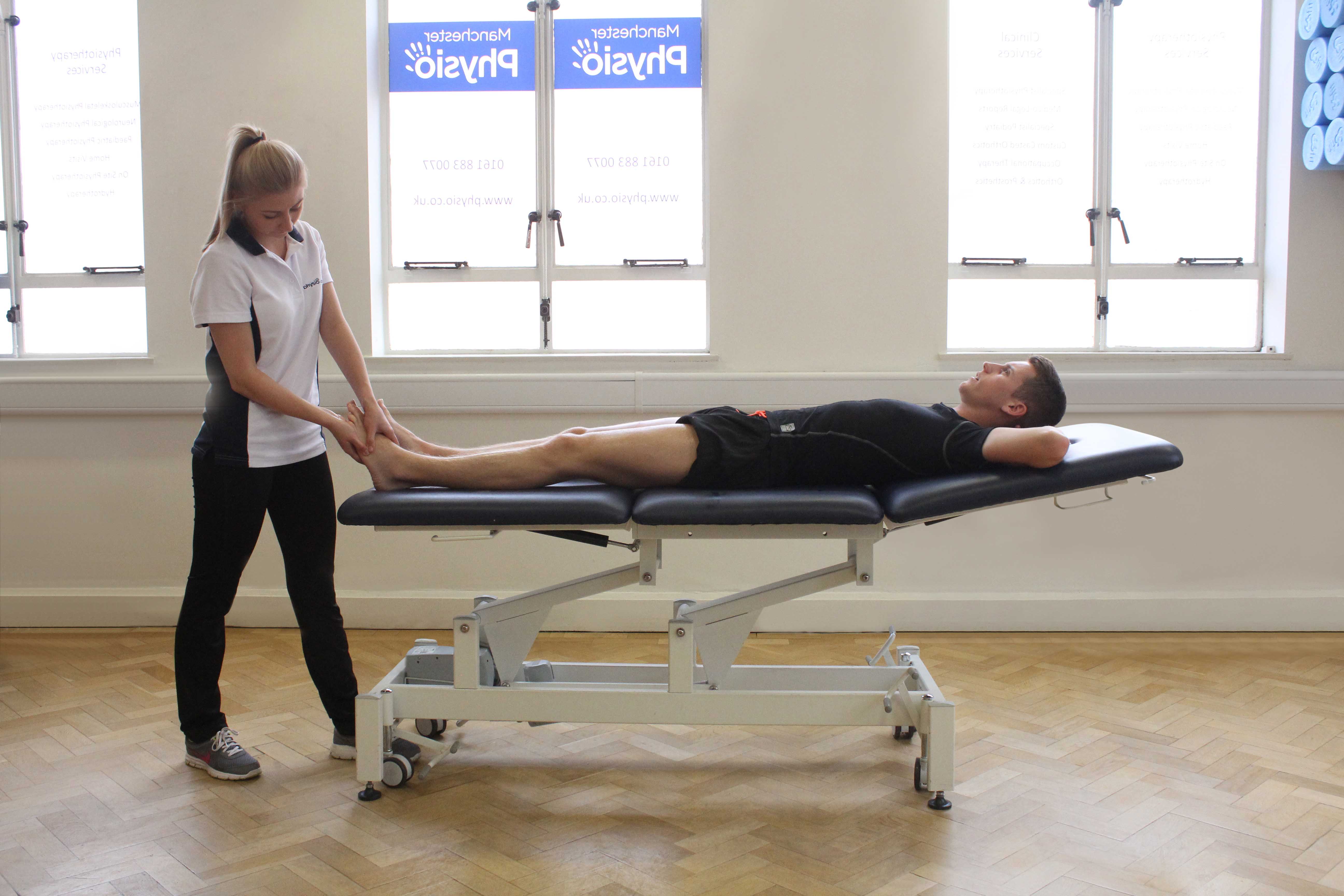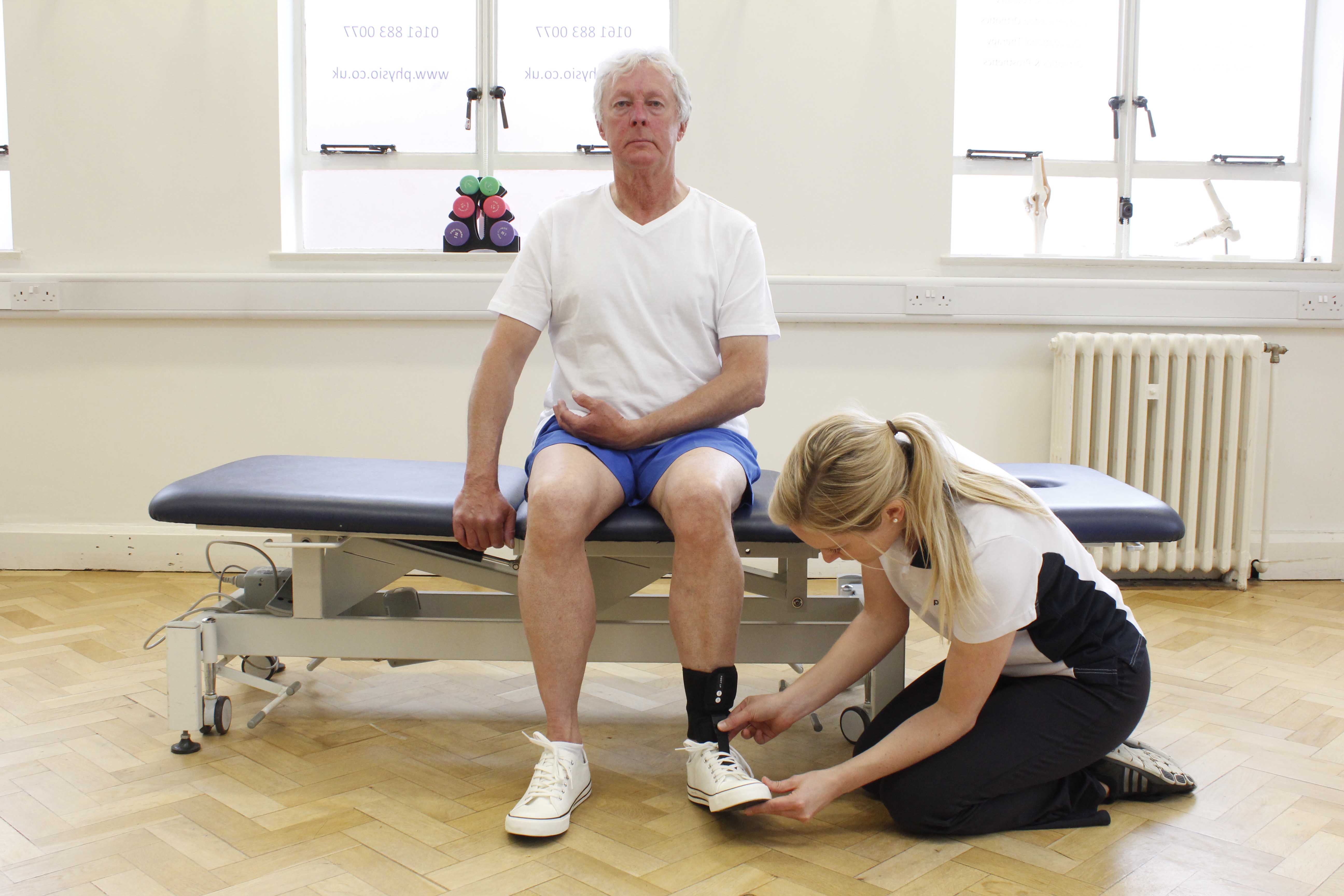What are osteochondral lesions of the talus?
Osteochondral lesions of the talus happen at the ankle and are pieces of cartilage not healing, softening and possibly breaking off, causing pain. These occur when there is damage to the talus cartilage.
‘Osteo’ refers to bone and ‘chondral’ refers to cartilage. The talus is one of the bones that make up the ankle. The bone has some cartilage covering it where it joins to other bones. The purpose of this cartilage is to cushion and protect the talus and to help the ankle move smoothly. If an injury occurs to the ankle then this cartilage can become damaged. If the cartilage does not heal properly then parts of the cartilage can soften and begin to break off. Parts of the cartilage can sometimes completely break off causing loose pieces of cartilage or loose bodies to be present inside the ankle. The loose bodies can affect the function of the ankle and cause pain.
 Above: Soft tissue massage and mobilisations of the bones and connective tissues in the foot by an experienced therapist
Above: Soft tissue massage and mobilisations of the bones and connective tissues in the foot by an experienced therapistHow do osteochondral lesions of the talus happen?
The most common cause of osteochondral lesions of the talus is a history of ankle trauma. For example if there have been several severe sprains to the ankle then the talus cartilage may not have had a chance to heal properly, causing osteochondral lesions to form.
What are the symptoms of osteochondral lesions of the talus?
The injury to the ankle itself may have healed before any symptoms of osteochondral lesions occur. If symptoms of osteochondral lesions occur separately to the ankle injury, then the onset of pain will be gradual. Symptoms may include:
- Pain in the ankle, especially during heavy weight bearing for example during sporting
- activities where large loads are put through the ankle
- Swelling of the ankle, especially after weight bearing activity
- A feeling of the ankle locking or giving way
- A feeling of clicking in the ankle during movement
What should I do if I have osteochondral lesions of the talus?
If you have or suspect you have osteochondral lesions of the talus, you should consult a physiotherapist as they will be able to reduce pain and swelling and rehabilitate the ankle. In the meantime you can apply ice to the ankle using a bag of frozen peas or crushed ice wrapped in a damp cloth for 15–20 minutes over the ankle every 1–2 hours.
 Above: Therapist fitting an ankle splint to support the ankle and prevent foot drop
Above: Therapist fitting an ankle splint to support the ankle and prevent foot dropWhat shouldn’t I do if I have osteochondral lesions of the talus?
If you have or suspect you have osteochondral lesions of the talus, you should avoid weight bearing on the ankle to allow it to heal. Heavy weight bearing such as sporting activities should be avoided completely.
Physiotherapy treatment for osteochondral lesions of the talus.
Physiotherapy can help to reduce pain and swelling of the ankle in the initial stages. Treatment can then focus on rehabilitation to return the ankle to normal function. Treatment may include:
- Soft tissue techniques
- Immobilization of the ankle
- Taping or bracing of the ankle
- Range of movement exercises
- Strengthening and stability exercises
- Education on activity levels
Could there be any long-term effects from osteochondral lesions of the talus?
As long as no cartilage has broken off and physiotherapy advice is followed, then a full recovery should be made and ankle function should be returned to normal along with normal activity levels. If some cartilage has broken off and there are some loose bodies in the ankle, or if physiotherapy has not fully resolved the problem, then surgery can be an option. The aim of surgery would be to remove any loose bodies or damaged cartilage so that the ankle can heal and rehabilitation can take place.
Please call Physio.co.uk on 0330 088 7800 to arrange an appointment or book online today.

 0330 088 7800
0330 088 7800

































